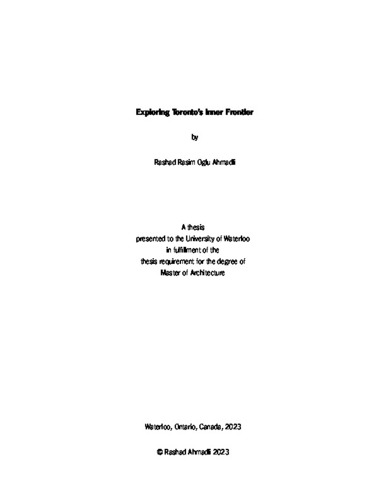| dc.description.abstract | It is without ceasing that urban spaces witness the cycle of their
birth and death. Like the waves of an ocean repeatedly crashing
into and withdrawing from the shoreline, the city’s sphere of
production and human activity consume our environment, only
to abandon it in subsequence, leaving behind, in a state of ruin,
vestiges of civilization, waiting to be reinvigorated again by
those who deem it useful or those who wish to capitalize by it.
Toronto’s inner-city frontier, that is to say its residential
laneway network which runs through the historic “park lot” grid
system, has experienced its share of public/private use and
subsequent abandonment. After having once hosted living units,
commercial properties and other public amenities, the laneways
gradually saw their abandonment due to by-law adjustment
and technological innovation. This partial abandonment has
transformed them into a public terrain vague and heterotopia
within the “official” city. In their semi-abandoned condition, they
host wild plants, street art and semi-anonymous social activity.
Today, redevelopment of laneways by means of laneway
housing construction and laneway activation for public use is
bringing back an informal version of what once existed before.
This thesis explores residential laneways in their current terrain
vague state as a way to celebrate their unproductive and “other”
condition, it highlights the various characteristics that make it
stand out within the urban landscape of Toronto and finally it
explores the various forces that are working in transforming
residential laneways into a unique urban typology. | en |

